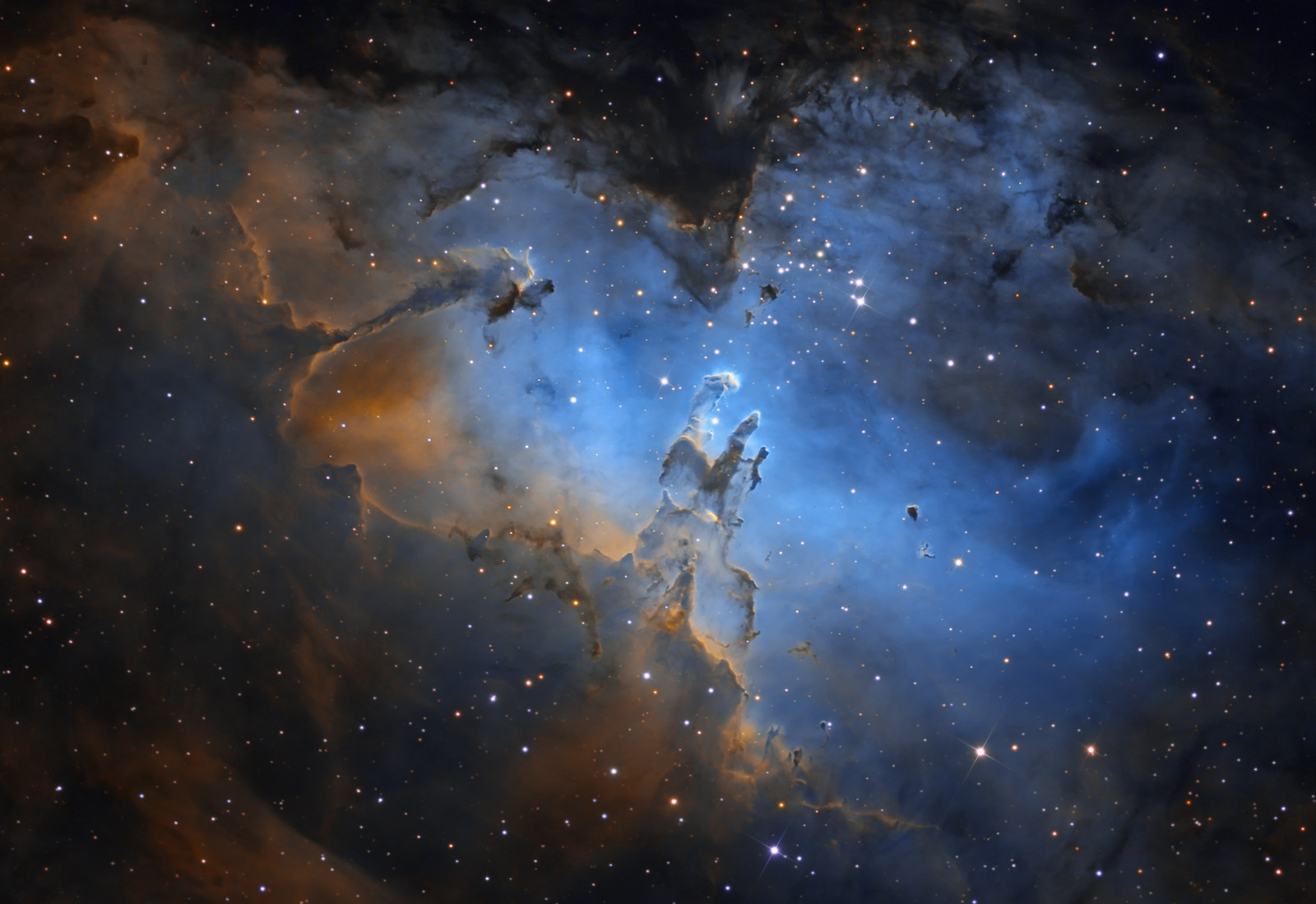
Copyright:Jimmy Walker
原文:
A star cluster around 2 million years young surrounded by natal clouds of dust and glowing gas, M16 is also known as The Eagle Nebula. This beautifully detailed image of the region includes cosmic sculptures made famous in Hubble Space Telescope close-ups of the starforming complex. Described as elephant trunks or Pillars of Creation, dense, dusty columns rising near the center are light-years in length but are gravitationally contracting to form stars. Energetic radiation from the cluster stars erodes material near the tips, eventually exposing the embedded new stars. Extending from the ridge of bright emission left of center is another dusty starforming column known as the Fairy of Eagle Nebula. M16 and the Eagle Nebula lie about 7,000 light-years away, an easy target for binoculars or small telescopes in a nebula rich part of the sky toward the split constellation Serpens Cauda (the tail of the snake).
中文翻譯:
🐶🌟 **M16 – The Eagle Nebula** 🌟🐶
M16是一個年輕約200萬年的星團,周圍環繞著新生星雲的塵埃和發光氣體。這幅詳盡的圖像展示了這個星形成複合體中一些著名的宇宙雕塑,在哈勃太空望遠鏡的近距離拍攝中更顯著。這些被描述為「大象的樹幹」或「創造之柱」的濃密塵埃柱子在中心附近高懸,長度以光年計算,但它們正在重力收縮中形成新的星星。星團中的能量輻射侵蝕著尖端附近的物質,最終暴露出嵌入其中的新星。位於圖像中央左側明亮發射的邊緣上,有另一條被稱為「Eagle Nebula Fairy」的塵埃星形成柱。M16和Eagle Nebula距離約7,000光年,是一個在天空中易於用雙筒望遠鏡或小型望遠鏡觀察的目標,位於蛇座的尾部(Serpens Cauda)。
#EagleNebula #M16 #PillarsOfCreation #StarFormation #HubbleSpaceTelescope #CosmicArt #AstronomyLovers #Nebula #SpacePhotography #SerpensCauda
來源:NASA每日圖片


